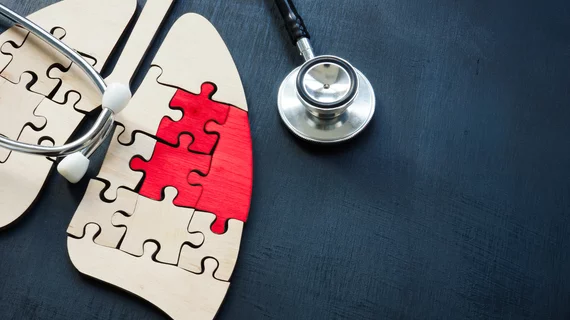New data underline importance of expanding Medicaid to address poor lung cancer screening uptake
New data underline the growing importance of expanding Medicaid to help address poor lung cancer screening uptake.
Across a nationwide sample of 26,000 individuals eligible for LCS in 2022, only about 18% reported being up to date with their imaging regimen. However, the prevalence varied anywhere from 10% to 31%, experts detailed Monday in JAMA Internal Medicine [1].
In particular, state Medicaid expansion and greater lung cancer screening capacity levels were tied to higher prevalence of up-to-date imaging uptake.
“Improving healthcare access—including through Medicaid expansions and removal of cost barriers to follow-up testing and treatment—will be particularly useful among underserved and minoritized racial and ethnic groups who are disproportionately affected by access barriers,” Priti Bandi, PhD, a researcher with the American Cancer Society, and colleagues wrote June 10. “Also needed are institutional and societal efforts to address LCS capacity, including screening infrastructure investments and quality benchmarking to incentivize implementation. Ultimately, multilevel initiatives that span patient, practitioner, system and societal levels may be necessary to match LCS need with delivery.”
The study utilized data from the 2022 Behavioral Risk Factor Surveillance System, pinpointing individuals 50 to 79 who were eligible for screening based on 2021 criteria. Uptake levels were lower in southern states characterized by a high lung cancer mortality burden. The chances of being up-to-date appeared to increase with age (for example, there was a 7% screening rate for those 50-54 versus 27% among individuals 70-79). Same for increasing comorbidities—about 25% of those with three or more such challenges were current on screening compared to 9% among those with zero comorbidities.
Nearly 4% of study subjects without insurance and 5% of patients “without a usual source of care” were up to date with lung cancer screening. However, state-level Medicaid expansion (adjusted prevalence ratio, 2.68) and higher screening capacity levels (high vs. low: APR, 19.3) were associated with higher uptake. The latter was defined as number of screening facilities in 2021 divided by the number of LCS-eligible individuals in the population.
A 2nd LCS study
A second study published in JAMA Internal Medicine [2] Monday explored whether patient navigation could improve LCS completion rates among a homeless population.
In a randomized clinical trial that included 260 patients treated between 2020-2023, navigation coupled with usual care produced a nearly fivefold increase in LCS receipt at six months. The screening rate was over 43% in the intervention group compared to 9% among those who received standard care.
Navigators were tasked with lung cancer education, facilitating shared decision-making visits with primary care docs and assisting participants in making and attending LDCT appointments.
“Study findings suggest that patient navigation may be an effective tool for promoting lung cancer screening engagement among people experiencing homelessness,” Travis P. Baggett, MD, with Massachusetts General Hospital in Boston, and co-authors advised.
In a corresponding editorial [3], Ilana B. Richman, MD, and Cary P. Gross, MD, said the two analyses highlight the importance of devising LCS strategies that look beyond just healthcare needs.
“Taken together, the studies by Bandi et al. and Baggett et al. prompt us to consider what successful implementation of lung cancer screening in the U.S. looks like,” the two Yale School of Medicine experts wrote Monday. “One definition of success in implementing lung cancer screening might be that all eligible patients are identified, are offered screening, have the opportunity to weigh risks and benefits while considering their own values carefully, and do not face structural barriers to screening and follow-up. A multipronged approach that addresses structural and patient-level barriers to screening, while facilitating and supporting high-quality shared decision-making needs, may help get us closer to this ideal. These important studies bring us closer to understanding where we are and where we might go.”
Read much more at the links below.

